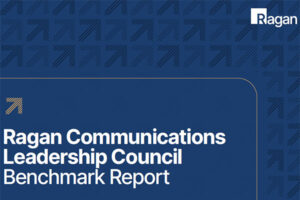How corporate communications can be most effective
What we discovered after surveying 264 corporate communicators and analyzing nearly 1.5 billion emails to 8.5 million employees.

Our data spans 10 S&P industry sectors and represents companies ranging from 1,000 to over 100,000 employees.
Survey responses demonstrate the continued superiority of email as the primary communications tool keeping teams working together even as everything suddenly shifted to remote. Our comprehensive data and detailed analysis provide solid corporate benchmarks that define email success.
Here we’ll highlight some opportunities for optimal internal communications performance in 2021.
Email remains the most utilized and effective internal corporate communications channel.
Even though 2020 was video conferencing’s breakout year due to the pandemic,
email scored highest as the most effective internal communications channel in our survey, with 88% placing email into the top three and 55% saying email is the number one channel.
Interestingly, virtual/video meetings ranked second, with 72% in the top three with 26% placing it second. Intranet sites placed third, with 56% in the top three with 23% choosing it third. Social, real-time chat channels placed fourth, and mobile apps were seventh. With a 9.47 score out of 10, email also has the highest corporate utilization, followed by video conferencing at 7.8 and the intranet at 7.5. We still think video conferencing fatigue is real, and we are looking forward to meeting in person and socializing in the office again.
The asynchronous nature of email communication makes it the perfect tool for workers juggling work and family responsibilities in new ways. Sixty-four percent of survey respondents ranked email as the one channel they couldn’t survive without during 2020, far above Microsoft Teams at 14%, and Slack at 5%.
The pandemic has demonstrated the continuing power of email to enable work, make internal connections, and move projects forward. Our survey revealed communications teams sent more executive communications and company news, with COVID-19 information being a close third.
When companies need to share knowledge with a broad audience or provide detailed instructions on items that need attention, email is the channel communicators believe works best. Video and virtual meetings are preferred for motivating change and proving strategic direction. For building communities, the preferred channel is social chat.
Employee email engagement can be measured.
Fifty-five percent of communicators surveyed said that open rate, followed by click-through (at 53%), is the most important email metric to measure.
We question the value of the email open rate. Yes, like web page views, it is easy to measure, and it does provide a measure of reach. However, our data shows that 9% will immediately ignore or delete the message after opening it, so we believe monitoring the attention rate (opens – ignored) is a more valuable metric.
Our 2020 Email Benchmark data reveals the average corporate open rate is 70%, but the top 20% have open rates exceeding 85%. How does your open rate compare against these metrics? Are you leading or trailing your peers?
One simple way to improve your open rates is to clean up your list. The sent count is the denominator of the open rate calculation, so when that number is accurate, without meeting rooms or former employees, your rates will go up!
Here’s a good question: Are employees reading your email communications? As the intent of sending an email message is most often for employees to read it, it only makes sense that readership metrics are of critical importance. Just because you sent it doesn’t mean you get the readership you want.
Our 2020 benchmark data reveals that, on average, you can expect to capture the attention of 60% of your audience, with 21% skimming your messages, reading 30% or less. While 39% of your audience will read more than 30%, consuming 77% of your content, on average.
When it comes to getting an employee to take an action, you can expect 8% of your audience to click through to something, while the top 20% of communicators achieve 16% and higher click rates.
Look to implement these three simple best practices, based on data, to improve your corporate email broadcasts right away:
1. Write less, and edit ruthlessly. Because everyone can write something, few people understand that writing clear, concise and compelling communications is far from easy. Never is this more important than in email. Our data shows the longer an email gets, the less of it people will read. The optimal email length is about 250 words or less, with plenty of white space. Time invested into editing, word choice, and crafting headlines will pay off.
2. Use more imagery. Surprisingly, the two types of email with the highest readership are those with all text and those with mostly images, and the mostly images messages have a 2% higher readership. Because pictures speak, why not use our 2020 benchmark data visualizations to make the case for a higher photography budget?
3. Want action? Send one link. Most corporate emails sent with links have five of them on average. But the messages with the highest click rate contain less than 250 words and contain just one link. Better still to call that link out near the top of the email as a button or in a larger font.
Companies that measure, improve!
Corporate communicators using PoliteMail over two years have improved all key metrics, including attention rates, readership, clicks, and engagement. Measuring your email results will lead to improvements and producing more effective emails.

The best way to improve employee engagement in 2021 is to track, improve, and test your communication channels. What gets measured gets managed.
Download the full PoliteMail 2020 benchmark analysis to get deeper insights into how communicators can become more effective in 2021.
Michael DesRochers is the CEO of PoliteMail, an email intelligence platform for Outlook. This article is in partnership with PoliteMail.






